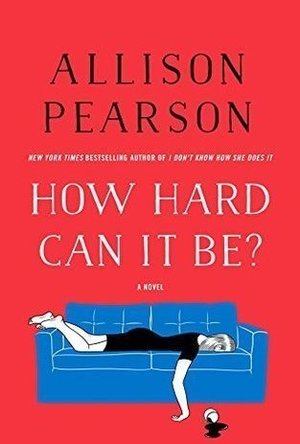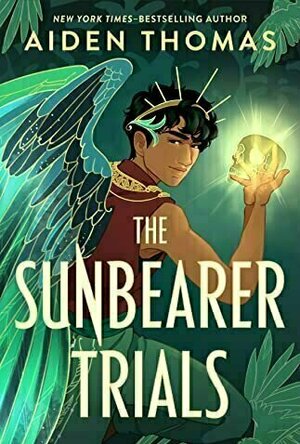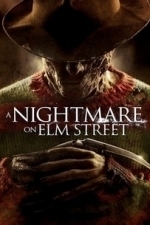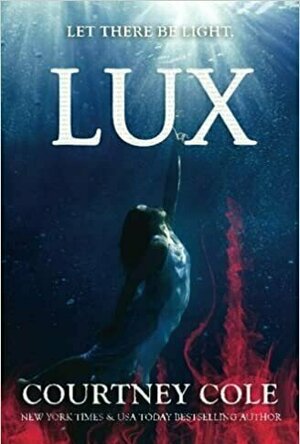Search
Search results
Bookapotamus (289 KP) rated How Hard Can It Be? in Books
May 29, 2018
It's all fun and games until someone posts a belfie.
Kate Reddy is back. And her daughters backSIDE is causing some trouble. We jump right into our favorite bad-a$$, anxiety-ridden, take-charge heroine Kate's life as she is approaching 50 and it seems the hilarity and struggles of parenting, working, wife-ing, friendship and everything else in Kate's life is just as amusing as ever.
Kate's daughter Emily has taken a pic of her butt and the crazy life of Kate's we all know and love, just cannot seem to get any more complicated - until it does. She's been out of the workforce, and looking to get back in, She's not having much of any sort of pleasant relations with husband Richard (yes, surprisingly, still married). She's having a mini mid-life crisis trying to accept she's almost 50, her parents are aging, and her kids are now teenagers and the struggles to communicate with these digital-age micro-adults is almost as difficult as communicating with Russian Investors.
As Kate tries to make her way back into the world of investing she once was so good at, she has some pretty cringeworthy experiences, and struggles to find a way in that world as an "aging" woman. We find several comparisons to the past, when just being a mother was the wall between her and success. She finds herself lying to herself and others, trying her best to tiptoe through a marriage in crisis and lack of communication with her children, and praying the looming milestone birthday isn't going to be the demise of any semblance of the woman that she knows she is, and desperately wants to find again. Oh, and did I mention Jack is BACK?!
The book is classic Allison Pearson: witty, entertaining and full of laughs. I didn't realize how much I missed Kate (I totally still picture SJP in every situation...) and I settled into a familiar routine of rooting for her to find her stride and finally be happy with who she is, who she's becoming, and where she might be headed next.
The story is nostalgic of I Don't Know How She Does It, but reads well as a standalone with snippets of backstory that are well-placed and don't interfere. Avoiding any spoilers, I'll just say that I'm pretty sure readers and fans of Kate Reddy will be pleased at how it all turns out. How Hard Can It Be? was refreshing but familiar and it felt like an old friend was back in my life.
Thanks to NetGalley and St. Martin's Press for the Advanced Copy and opportunity to review this book.
Kate Reddy is back. And her daughters backSIDE is causing some trouble. We jump right into our favorite bad-a$$, anxiety-ridden, take-charge heroine Kate's life as she is approaching 50 and it seems the hilarity and struggles of parenting, working, wife-ing, friendship and everything else in Kate's life is just as amusing as ever.
Kate's daughter Emily has taken a pic of her butt and the crazy life of Kate's we all know and love, just cannot seem to get any more complicated - until it does. She's been out of the workforce, and looking to get back in, She's not having much of any sort of pleasant relations with husband Richard (yes, surprisingly, still married). She's having a mini mid-life crisis trying to accept she's almost 50, her parents are aging, and her kids are now teenagers and the struggles to communicate with these digital-age micro-adults is almost as difficult as communicating with Russian Investors.
As Kate tries to make her way back into the world of investing she once was so good at, she has some pretty cringeworthy experiences, and struggles to find a way in that world as an "aging" woman. We find several comparisons to the past, when just being a mother was the wall between her and success. She finds herself lying to herself and others, trying her best to tiptoe through a marriage in crisis and lack of communication with her children, and praying the looming milestone birthday isn't going to be the demise of any semblance of the woman that she knows she is, and desperately wants to find again. Oh, and did I mention Jack is BACK?!
The book is classic Allison Pearson: witty, entertaining and full of laughs. I didn't realize how much I missed Kate (I totally still picture SJP in every situation...) and I settled into a familiar routine of rooting for her to find her stride and finally be happy with who she is, who she's becoming, and where she might be headed next.
The story is nostalgic of I Don't Know How She Does It, but reads well as a standalone with snippets of backstory that are well-placed and don't interfere. Avoiding any spoilers, I'll just say that I'm pretty sure readers and fans of Kate Reddy will be pleased at how it all turns out. How Hard Can It Be? was refreshing but familiar and it felt like an old friend was back in my life.
Thanks to NetGalley and St. Martin's Press for the Advanced Copy and opportunity to review this book.

Hairy Maclary from Donaldson's Dairy
Book and Education
App
The immensely popular Hairy Maclary from Donaldson’s Dairy is now available as an interactive...
RavenclawPrincess913 (253 KP) rated The Sunbearer Trials in Books
Sep 8, 2022
The Sunbearer Trials by Aiden Thomas is a five out of five stars. I loved it and it was hard to put down once the Trials started. The Golds who take part in the Trials are Ocelo, Marino, Twins: Auristela, Aurelio, Atzi, Xochi, Dezi and Niya. The Jades who takes part are Xio and our main character Teo Son of Quetzal. The Sunbearer Trials are trials that take place to decide who will be this decade's Sunbearer and who will be the one sacrificed in order to fuel the Sol Stone for the next ten years to keep the people safe from the Obsidians. The Obsidian God's were locked away when Sol sacrificed themselves to protect their people. If a sacrifice doesn't take place every ten years to refuel the stone they will be set free. The eight golds and two jades must compete in five Trials to see who Sol deems worthy enough of being Sunbearer and the one who is sacrificed to protect all others.
This boom had a lot of action which I loved and made it very interesting. I love books that are action packed. Some Trials were more interesting than the others. My favorite was probably the trial where Aurelio and Teo teamed up and won it. They were friends when little so it must have been nice being able to work together again. I also loved the animal one the animal that Teo collected was so cute. The trial they had to collect all the stones seems fun as well. The last one was pretty scary though especially Auristela's outburst at the end of it. By the end of the book I was crying. Teo, Nina and Xio were friends throughout the Trials but I always had a bad feeling about Xio. Something about him just seemed off. So I was surprised but not surprised by their betrayal at the end.
My least favorite character of the ten competitors was probably Ocelo. He just gives off bad vibes. It was Auristela at first to but I came to realize deep down she was just trying to protect her twin brother Aurelio and help him to become Sunbearer. She wanted this for him so their mom would deem him worthy and stop treating him so badly.
Outside the Trials my favorite scene was probably when Aurelio and Teo sneaked off the boat to get the candy to cheer up Niya. I loved when Aurelio touched Teo's wings it was cute. If you love books with God's, Goddesses, and their children I definitely recommend reading this. Also, I love the cover it fits the story perfectly.
This boom had a lot of action which I loved and made it very interesting. I love books that are action packed. Some Trials were more interesting than the others. My favorite was probably the trial where Aurelio and Teo teamed up and won it. They were friends when little so it must have been nice being able to work together again. I also loved the animal one the animal that Teo collected was so cute. The trial they had to collect all the stones seems fun as well. The last one was pretty scary though especially Auristela's outburst at the end of it. By the end of the book I was crying. Teo, Nina and Xio were friends throughout the Trials but I always had a bad feeling about Xio. Something about him just seemed off. So I was surprised but not surprised by their betrayal at the end.
My least favorite character of the ten competitors was probably Ocelo. He just gives off bad vibes. It was Auristela at first to but I came to realize deep down she was just trying to protect her twin brother Aurelio and help him to become Sunbearer. She wanted this for him so their mom would deem him worthy and stop treating him so badly.
Outside the Trials my favorite scene was probably when Aurelio and Teo sneaked off the boat to get the candy to cheer up Niya. I loved when Aurelio touched Teo's wings it was cute. If you love books with God's, Goddesses, and their children I definitely recommend reading this. Also, I love the cover it fits the story perfectly.
The Bandersnatch (199 KP) rated Dracula in Books
Nov 7, 2019
Dracula was written by author Bram Stoker during the late 1890's and is set around the character of Dracula and his attempt to move from Transylvania to England so he can spread the curse of the undead (I.e. the creation of more vampires). English solicitor Jonathan Harker who'd originally gone to Transylvania to be legal aide for Dracula stops him with the help of Van Helsing and others which ends the life of one of them – Quincey-, the book ends with a note from Jonathan Harker that several people lived happily married and Jonathan has a son nicknamed for Quincey.
Dracula was published in London in May 1897 by Archibald Constable & Company and was later copyrighted in the U.S in 1899 and published by Doubleday & McClure of New York. Despite having decent praise form reviewers it wasn't an immediate bestseller. Although the English newspaper the Daily Mail ranked Stoker's writing prowess in Dracula above that of Mary Shelly, Edgar Allen Poe and Emily Bronte's Wuthering heights. Unfortunately it didn't make Stoker that much money and he'd had to petition for a compassionate grant from the royal literary fund. When he died his widow was forced to sell his notes and outlines of the book at an auction in 1913. It was the unauthorised adaption of Nosferatu by F. W. Murnau in 1922 and the resulting legal battle made when Stokers widow took affront that the novels popularity began to grow.
Before writing Dracula Bram Stoker had been researching European folklore and stories of vampires having been most influenced by Emily Gerard's “Transylvania Superstitions” 1885 essay...which included content about the vampire myth. Some historians insist that Vlad iii Dracula (More commonly known as Vlad the impaler) was the model for Stokers count but there's been no supporting evidence to make that true. According to one expert Stoker only borrowed the barest minimum of information of the Wallachian tyrant and he's not even mentioned in Stokers notes. Stoker was a member of the London library during the 1890's where books by Sabine Baring-Gould, Thomas Browne, AF Crosse and Charles Boner are attributed to Stokers research. Stoker would later claim he'd had a nightmare caused by over-eating crab meat about a “Vampire king” rising from his grave. Whitby on the Yorkshire coast contributed its landscape since Bram Stoker often holidayed there during the summer.
Dracula wasn't Stokers first choice as title for the story since he cycled through The Dead Un-Dead then simply the Un-Dead the count wasn't even supposed to be Count Dracula having had the name Count Wampyr for several drafts before Stoker became intrigued by the name Dracula. After reading “An account of the principles of Wallachia and Moldavia with political observations relative to them” written by author William Wilkinson (Published in 1820). the descendants of Vlad ii of Wallachia took the name Dracula or Dracul after being invested in the Order of the Dragon in 1431. In the old Romanian language the word Dracul mean “the Dragon” and Dracula meant “Son of the Dragon”. Nowadays however Dracul means “the Devil”
Whilst Dracula is known as THE Vampire novel its not the first. Johan Wolfgang Von Goethe had his book the Bride of Corinth published in 1797, 1871's Carmilla (a story about a lesbian vampire) was written by Sheridan Le Frau and James Malcolm Rymer's penny dreadful series Venny the Vampire was a product from the mid Victorian period. Even John Polidori created an image of a vampyric aristocrat in his 1819 story The Vampyre when he spent a summer with Merry Shelly (creator of Frankenstein) and her poet husband Percy Bysshe Shelly and Lord Bryon in 1816.
I really love Dracula. It showed the madness, the ethereal quality and the ultimate danger of what a vampire could do. Like many other goth inclined teenagers trying to find their feet in the world Dracula definitely added its two cents to my self worth and love of all things macabre. The fact it was written by a Victorian writer has added a unusual depth to the story as only a Victorian writer could. The culture of the Vampire has become deep rooted and wide spread in its acceptance and Dracula has definitely spearheaded such a phenomenon.
Abraham “Bram” Stoker was Born in Dublin, Ireland on the 8th of November 1847, He was the third of seven children born to Abraham and Charlotte Stoker and was bedridden with an unknown illness until he recovered at seven. He started schooling at a private school run by the Reverend William Woods and grew up without serious illness. Stoker excelled at sports at Trinity College Dublin having graduated in 1870 with a BA (Bachelor of Arts). He was an Auditor of the College Historical Society and the president of the University Philosophical Society where his first paper was on Sensationalism in fiction and society.
Thanks to his friend Dr. Maunsell, Stoker became interested in the theatre as a student and whilst working for the Irish civil service he became a theatre critic for the Dublin evening mail where he attracted notice for the quality of his reviews. Stoker gave a favourable review of Henry Irving's adaption of Hamlet in December 1876, this prompted Irving to invite him to dinner where they ended up becoming friends. Stoker wrote The Crystal Cup which was published by the London society in 1872 and The chain of Destiny which was released in four parts in the Shamrock. Stoker also wrote the non-fiction book the duties of clerks of petty sessions in Ireland which was published in 1879.
Bram stoker married Florence Balcombe the daughter of a lieutenent-colonel in 1978 and they moved to London. Where Stoker ended up the Business manager of the Lyceum theatre as well as manager for Henry Irving- a position he held for 27 years. Despite being a very busy man Stoker ended up writing several novels (as well as Dracula) Including The Snakes pass in 1890, the lady of the shroud in 1909 and the lair of the white worm in 1911. when Henry Irving died in 1906 he published his personal reminiscences of Henry Irving. Stoker also managed productions at the Prince of Wales theatre.
Bram stoker died after a series of strokes in London on April 20th 1912, the cause of death is split between the possibility of Tertiary Syphilis or overwork. He was cremated and was placed in a display urn at Golders Green Crematorium in North London, he was later joined by the ashes of his Son Irving Noel Stoker in 1961, his wife Florence was meant to join them but her ashes were scattered at the Gardens of rest.
Stoker was honoured with a Google Doogle (the banner on goggles homepage) on November 8th 2012 commemorating the 165th anniversary of his birth. An annual festival in honour of Bram Stoker happens in Dublin, its supported by the Bram stoker estate and was/is usually funded by Dublin City Council and Failte Ireland.
My opinion of Bran stoker is that of a decent hard working man who loved life. Stoker epitomises the phrases of “a man on a mission” and “a man who hussles”. Having worked extremely hard both creatively as a novelist and business wise as a theatre manager Stoker pretty much showed that if you work hard you could pretty much do anything you set your mind to.
And there you have it a book for all the ages, definitely under the banner of AWESOME!!!.
Dracula was published in London in May 1897 by Archibald Constable & Company and was later copyrighted in the U.S in 1899 and published by Doubleday & McClure of New York. Despite having decent praise form reviewers it wasn't an immediate bestseller. Although the English newspaper the Daily Mail ranked Stoker's writing prowess in Dracula above that of Mary Shelly, Edgar Allen Poe and Emily Bronte's Wuthering heights. Unfortunately it didn't make Stoker that much money and he'd had to petition for a compassionate grant from the royal literary fund. When he died his widow was forced to sell his notes and outlines of the book at an auction in 1913. It was the unauthorised adaption of Nosferatu by F. W. Murnau in 1922 and the resulting legal battle made when Stokers widow took affront that the novels popularity began to grow.
Before writing Dracula Bram Stoker had been researching European folklore and stories of vampires having been most influenced by Emily Gerard's “Transylvania Superstitions” 1885 essay...which included content about the vampire myth. Some historians insist that Vlad iii Dracula (More commonly known as Vlad the impaler) was the model for Stokers count but there's been no supporting evidence to make that true. According to one expert Stoker only borrowed the barest minimum of information of the Wallachian tyrant and he's not even mentioned in Stokers notes. Stoker was a member of the London library during the 1890's where books by Sabine Baring-Gould, Thomas Browne, AF Crosse and Charles Boner are attributed to Stokers research. Stoker would later claim he'd had a nightmare caused by over-eating crab meat about a “Vampire king” rising from his grave. Whitby on the Yorkshire coast contributed its landscape since Bram Stoker often holidayed there during the summer.
Dracula wasn't Stokers first choice as title for the story since he cycled through The Dead Un-Dead then simply the Un-Dead the count wasn't even supposed to be Count Dracula having had the name Count Wampyr for several drafts before Stoker became intrigued by the name Dracula. After reading “An account of the principles of Wallachia and Moldavia with political observations relative to them” written by author William Wilkinson (Published in 1820). the descendants of Vlad ii of Wallachia took the name Dracula or Dracul after being invested in the Order of the Dragon in 1431. In the old Romanian language the word Dracul mean “the Dragon” and Dracula meant “Son of the Dragon”. Nowadays however Dracul means “the Devil”
Whilst Dracula is known as THE Vampire novel its not the first. Johan Wolfgang Von Goethe had his book the Bride of Corinth published in 1797, 1871's Carmilla (a story about a lesbian vampire) was written by Sheridan Le Frau and James Malcolm Rymer's penny dreadful series Venny the Vampire was a product from the mid Victorian period. Even John Polidori created an image of a vampyric aristocrat in his 1819 story The Vampyre when he spent a summer with Merry Shelly (creator of Frankenstein) and her poet husband Percy Bysshe Shelly and Lord Bryon in 1816.
I really love Dracula. It showed the madness, the ethereal quality and the ultimate danger of what a vampire could do. Like many other goth inclined teenagers trying to find their feet in the world Dracula definitely added its two cents to my self worth and love of all things macabre. The fact it was written by a Victorian writer has added a unusual depth to the story as only a Victorian writer could. The culture of the Vampire has become deep rooted and wide spread in its acceptance and Dracula has definitely spearheaded such a phenomenon.
Abraham “Bram” Stoker was Born in Dublin, Ireland on the 8th of November 1847, He was the third of seven children born to Abraham and Charlotte Stoker and was bedridden with an unknown illness until he recovered at seven. He started schooling at a private school run by the Reverend William Woods and grew up without serious illness. Stoker excelled at sports at Trinity College Dublin having graduated in 1870 with a BA (Bachelor of Arts). He was an Auditor of the College Historical Society and the president of the University Philosophical Society where his first paper was on Sensationalism in fiction and society.
Thanks to his friend Dr. Maunsell, Stoker became interested in the theatre as a student and whilst working for the Irish civil service he became a theatre critic for the Dublin evening mail where he attracted notice for the quality of his reviews. Stoker gave a favourable review of Henry Irving's adaption of Hamlet in December 1876, this prompted Irving to invite him to dinner where they ended up becoming friends. Stoker wrote The Crystal Cup which was published by the London society in 1872 and The chain of Destiny which was released in four parts in the Shamrock. Stoker also wrote the non-fiction book the duties of clerks of petty sessions in Ireland which was published in 1879.
Bram stoker married Florence Balcombe the daughter of a lieutenent-colonel in 1978 and they moved to London. Where Stoker ended up the Business manager of the Lyceum theatre as well as manager for Henry Irving- a position he held for 27 years. Despite being a very busy man Stoker ended up writing several novels (as well as Dracula) Including The Snakes pass in 1890, the lady of the shroud in 1909 and the lair of the white worm in 1911. when Henry Irving died in 1906 he published his personal reminiscences of Henry Irving. Stoker also managed productions at the Prince of Wales theatre.
Bram stoker died after a series of strokes in London on April 20th 1912, the cause of death is split between the possibility of Tertiary Syphilis or overwork. He was cremated and was placed in a display urn at Golders Green Crematorium in North London, he was later joined by the ashes of his Son Irving Noel Stoker in 1961, his wife Florence was meant to join them but her ashes were scattered at the Gardens of rest.
Stoker was honoured with a Google Doogle (the banner on goggles homepage) on November 8th 2012 commemorating the 165th anniversary of his birth. An annual festival in honour of Bram Stoker happens in Dublin, its supported by the Bram stoker estate and was/is usually funded by Dublin City Council and Failte Ireland.
My opinion of Bran stoker is that of a decent hard working man who loved life. Stoker epitomises the phrases of “a man on a mission” and “a man who hussles”. Having worked extremely hard both creatively as a novelist and business wise as a theatre manager Stoker pretty much showed that if you work hard you could pretty much do anything you set your mind to.
And there you have it a book for all the ages, definitely under the banner of AWESOME!!!.
Chris Sawin (602 KP) rated A Nightmare on Elm Street (2010) in Movies
Jun 22, 2019 (Updated Jun 23, 2019)
Nancy (Rooney Mara) thinks she's suffering from an average case of nightmares that are causing her to lose sleep. A burned man with blades on his fingers haunts her dreams. She doesn't think much of it until her friends start getting picked off one by one while they sleep and are dreaming of the same man. Something happened during their childhood that connects them to this man that their parents are trying to cover up. As far as anyone else is concerned, Freddy Krueger (Jackie Earle Haley) never existed. What their parents refuse to believe is that Freddy exists in the dreams of their children causing them to remember their past and kill them. Now it's up to Nancy and her friend Quentin (Kyle Gallner) to figure out how the pieces of the puzzle fit before they become Freddy's next victims.
A Nightmare on Elm Street is one of the most beloved horror classics of all time. The original introduced us to Fred Krueger who would later be known as "Freddy" and evolve into one of the most popular icons in the horror genre. 26 years later, the film has been remade and Jackie Earle Haley has replaced Robert Englund as the dream-stalking child killer. Fans of the original franchise were left wondering if there was a slight chance of this being somewhat decent and if Haley's version of Freddy wouldn't be cringeworthy. Truth be told, the film may not be as bad as you're expecting.
This remake rests on the shoulders of Haley's portrayal of Freddy. If die hard horror fans can get past constantly comparing him to Englund, then they'll realize that Haley doesn't do a bad job. His Rorschach voice was actually a great choice for the role as it seemed to reverberate off the walls of the theater throughout the entire film. His stalking methods were a bit different than expected. Haley's Freddy doesn't talk as much as Englund's and seems to be off-screen just as often as he is on. The wisecracking has been toned way down, as well, but he does manage to squeeze in, "How's this for a wet dream?" Haley's version of Freddy is angry. He is PISSED that these kids squealed on him and he wants them to pay, but wants to dish out his revenge in a way that lets him have fun at the same time. His body language speaks volumes, too. His bladed fingers itch in anticipation of the kill. In fact, it seems like his fingers talk more than he does. The realistic burn victim route with the make-up seems like it's just as much a blessing as it is a curse. Freddy's eyes look really weird. They're too small and beady. He looks like kind of like a monkey when you do catch a full glimpse of his face. That's a shame, too. Since everything else looks pretty fantastic.
The storyline seems to basically follow the same path as the original film, but it probably should have skipped some of the new detours it makes along the way. Kris dreams of herself as a child with bloody claw marks across her torso and then finds the same dress with four gashes in her attic, but she doesn't have any scars from this rather severe injury she obtained when she was five? Even if the explanation was she had some sort of cosmetic surgery, wouldn't that be just as traumatic for a child? The CG version of the scene where we see Freddy coming out of the wall in the remake is probably the weakest in the entire film. The scene in the original is one of its most memorable visuals. In the remake, it's botched thanks to crummy CG. Even in comparison to the rest of the CG in the film, it doesn't measure up. It's the one scene that I wasn't able to look past. However, the micronaps idea is truly fantastic for the film. That was one thing I highly approved of going into it. The way that is pulled off is one of the highlights of the remake. It's one of those ideas that fits so perfectly, you're surprised it wasn't in the original film. Fred Krueger's background is where the film really goes into its own territory though. Fred was a gardener who lived in the basement of Badham Pre-School and the children were his life. He apparently took them to his "cave" where they emerged with scratches on their bodies. The parents of Elm Street don't bother trying to inform the police. They just burn Krueger alive as retribution to what he did to their children. While the original franchise never really came right out and said that Freddy was a child molester, it always strongly hinted at it. The remake seems to basically come right out and say that he is one without actually saying it. The evidence they find in his "cave" solidifies that fact. Maybe they felt like they needed to do that since this is such a "serious" version of Freddy...? Certain things just don't add up in the long run. Quentin and Nancy are driving in a car at one point and Quentin has a micronap where he sees Freddy in front of the car. He swerves out of the way to avoid hitting him and winds up in this boggy marsh off the side of the road. The question is WHY would you swerve out of the way of a man who was trying to kill you?
The kills seem to get more gruesome as the film goes on. It's a nice route to go, really. The last kill of the film is probably the one you'll remember most. I wasn't too incredibly attached to Nancy in the original film, but Rooney Mara's version was really boring. You don't care about what happens to her at all. You're more interested in what happens to her friends. She's an art student that can't sleep and is connected to Freddy somehow. That's pretty much all that's revealed. Why should we care that she may die?
A Nightmare on Elm Street certainly has its misfires when it comes to special effects and its storyline, but the problems it has aren't really any different than the problems most modern day horror movies have. At least the acting wasn't terrible like in an 80s slasher and the CG effects aren't incredibly outdated or anything. The film was designed to appeal to the demographic going to movie theaters to see a horror movie in 2010 and it seems to do that very well. Sure, it probably doesn't live up to the original film, but not many remakes do. If people see this without seeing the original film first, they'll probably love the remake. For original Freddy fans though, it'll probably come down to Haley's portrayal of Freddy. If you can see the film without any expectations or with finally accepting the fact that Robert Englund is no longer Freddy, it actually isn't quite as terrible as you may have originally thought. Strangely enough, it's even entertaining at times. Go figure.
A Nightmare on Elm Street is one of the most beloved horror classics of all time. The original introduced us to Fred Krueger who would later be known as "Freddy" and evolve into one of the most popular icons in the horror genre. 26 years later, the film has been remade and Jackie Earle Haley has replaced Robert Englund as the dream-stalking child killer. Fans of the original franchise were left wondering if there was a slight chance of this being somewhat decent and if Haley's version of Freddy wouldn't be cringeworthy. Truth be told, the film may not be as bad as you're expecting.
This remake rests on the shoulders of Haley's portrayal of Freddy. If die hard horror fans can get past constantly comparing him to Englund, then they'll realize that Haley doesn't do a bad job. His Rorschach voice was actually a great choice for the role as it seemed to reverberate off the walls of the theater throughout the entire film. His stalking methods were a bit different than expected. Haley's Freddy doesn't talk as much as Englund's and seems to be off-screen just as often as he is on. The wisecracking has been toned way down, as well, but he does manage to squeeze in, "How's this for a wet dream?" Haley's version of Freddy is angry. He is PISSED that these kids squealed on him and he wants them to pay, but wants to dish out his revenge in a way that lets him have fun at the same time. His body language speaks volumes, too. His bladed fingers itch in anticipation of the kill. In fact, it seems like his fingers talk more than he does. The realistic burn victim route with the make-up seems like it's just as much a blessing as it is a curse. Freddy's eyes look really weird. They're too small and beady. He looks like kind of like a monkey when you do catch a full glimpse of his face. That's a shame, too. Since everything else looks pretty fantastic.
The storyline seems to basically follow the same path as the original film, but it probably should have skipped some of the new detours it makes along the way. Kris dreams of herself as a child with bloody claw marks across her torso and then finds the same dress with four gashes in her attic, but she doesn't have any scars from this rather severe injury she obtained when she was five? Even if the explanation was she had some sort of cosmetic surgery, wouldn't that be just as traumatic for a child? The CG version of the scene where we see Freddy coming out of the wall in the remake is probably the weakest in the entire film. The scene in the original is one of its most memorable visuals. In the remake, it's botched thanks to crummy CG. Even in comparison to the rest of the CG in the film, it doesn't measure up. It's the one scene that I wasn't able to look past. However, the micronaps idea is truly fantastic for the film. That was one thing I highly approved of going into it. The way that is pulled off is one of the highlights of the remake. It's one of those ideas that fits so perfectly, you're surprised it wasn't in the original film. Fred Krueger's background is where the film really goes into its own territory though. Fred was a gardener who lived in the basement of Badham Pre-School and the children were his life. He apparently took them to his "cave" where they emerged with scratches on their bodies. The parents of Elm Street don't bother trying to inform the police. They just burn Krueger alive as retribution to what he did to their children. While the original franchise never really came right out and said that Freddy was a child molester, it always strongly hinted at it. The remake seems to basically come right out and say that he is one without actually saying it. The evidence they find in his "cave" solidifies that fact. Maybe they felt like they needed to do that since this is such a "serious" version of Freddy...? Certain things just don't add up in the long run. Quentin and Nancy are driving in a car at one point and Quentin has a micronap where he sees Freddy in front of the car. He swerves out of the way to avoid hitting him and winds up in this boggy marsh off the side of the road. The question is WHY would you swerve out of the way of a man who was trying to kill you?
The kills seem to get more gruesome as the film goes on. It's a nice route to go, really. The last kill of the film is probably the one you'll remember most. I wasn't too incredibly attached to Nancy in the original film, but Rooney Mara's version was really boring. You don't care about what happens to her at all. You're more interested in what happens to her friends. She's an art student that can't sleep and is connected to Freddy somehow. That's pretty much all that's revealed. Why should we care that she may die?
A Nightmare on Elm Street certainly has its misfires when it comes to special effects and its storyline, but the problems it has aren't really any different than the problems most modern day horror movies have. At least the acting wasn't terrible like in an 80s slasher and the CG effects aren't incredibly outdated or anything. The film was designed to appeal to the demographic going to movie theaters to see a horror movie in 2010 and it seems to do that very well. Sure, it probably doesn't live up to the original film, but not many remakes do. If people see this without seeing the original film first, they'll probably love the remake. For original Freddy fans though, it'll probably come down to Haley's portrayal of Freddy. If you can see the film without any expectations or with finally accepting the fact that Robert Englund is no longer Freddy, it actually isn't quite as terrible as you may have originally thought. Strangely enough, it's even entertaining at times. Go figure.
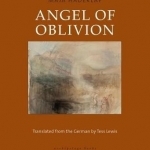
Angel of Oblivion
Book
Haderlap is an accomplished poet, and that lyricism leaves clear traces on this ravishing debut,...
Alexis Taylor recommended Il Vangelo Secondo Matteo (The Gospel According To St. Matthew) by Luis Enrique Bacalov in Music (curated)
Kristina (502 KP) rated Lux (The Nocte Trilogy, #3) in Books
Dec 7, 2020
Contains spoilers, click to show
Mind. Blown.
What the holy crap did I just read? I'm completely satisfied, yet my mind is still reeling from all the unexpected twists and turns I just experienced. Seriously, what just happened? Cole literally said the ending can be interpreted how the readers wants and I have my interpretation (though I would never attribute it to real life; I'm really good at suspending my beliefs for a good story). The whole family was cursed. They continued to multiply with one another, creating children out of incest, therefore the curse never ended. If Laura hadn't been with Richard, I feel like the curse would have ended. Or maybe not. Either way, I want to believe that Dare, Calla, and Finn went round and round in an endless cycle, one that changed ever so slightly every now and then, until they finally made the decision that put everything into balance. I loved the ending, though there was a dark time when I would have accepted anyone's deaths other than Calla's and Dare's. I've given Lux a 4.5 out of 5 stars. It would originally be 5 out of 5, because the story is absolutely crazy and the author is a complete lunatic - in all the best ways. I understand that she chose to rewrite certain scenes from both Nocte and Verum to show that moments kept repeating themselves, even if there were slight changes. It was just hard to concentrate, considering I'd already read those scenes just before this book. I think I would have enjoyed those parts better had she tried to word them differently or focused on a different aspect while playing out the same scenario. Other than that, Lux was a continuous whirlwind of confusion. Cole was great at allowing the reader to see the finish line, to get close enough to taste it, only to pull the rug out from underneath us and make us start the marathon again. It was exciting, intimidating, daunting, and fun. There were so many ways Lux could have ended and all of them probably would have matched up with the plot of the entire series, but I'm very happy with the ending she offered - even if I was a little upset to say goodbye to Calla and Dare.
What the holy crap did I just read? I'm completely satisfied, yet my mind is still reeling from all the unexpected twists and turns I just experienced. Seriously, what just happened? Cole literally said the ending can be interpreted how the readers wants and I have my interpretation (though I would never attribute it to real life; I'm really good at suspending my beliefs for a good story). The whole family was cursed. They continued to multiply with one another, creating children out of incest, therefore the curse never ended. If Laura hadn't been with Richard, I feel like the curse would have ended. Or maybe not. Either way, I want to believe that Dare, Calla, and Finn went round and round in an endless cycle, one that changed ever so slightly every now and then, until they finally made the decision that put everything into balance. I loved the ending, though there was a dark time when I would have accepted anyone's deaths other than Calla's and Dare's. I've given Lux a 4.5 out of 5 stars. It would originally be 5 out of 5, because the story is absolutely crazy and the author is a complete lunatic - in all the best ways. I understand that she chose to rewrite certain scenes from both Nocte and Verum to show that moments kept repeating themselves, even if there were slight changes. It was just hard to concentrate, considering I'd already read those scenes just before this book. I think I would have enjoyed those parts better had she tried to word them differently or focused on a different aspect while playing out the same scenario. Other than that, Lux was a continuous whirlwind of confusion. Cole was great at allowing the reader to see the finish line, to get close enough to taste it, only to pull the rug out from underneath us and make us start the marathon again. It was exciting, intimidating, daunting, and fun. There were so many ways Lux could have ended and all of them probably would have matched up with the plot of the entire series, but I'm very happy with the ending she offered - even if I was a little upset to say goodbye to Calla and Dare.

My Talking Angela
Games and Entertainment
App
Explore the glamorous world of Talking Angela. Adopt Angela and make her your very own superstar....

Jean-Jacques Rousseau: Restless Genius
Book
The extraordinary life of Jean-Jacques Rousseau, the eighteenth-century literary genius who changed...
